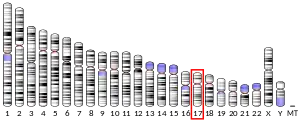| DOC2B | |||||||||||||||||||||||||||||||||||||||||||||||||||
|---|---|---|---|---|---|---|---|---|---|---|---|---|---|---|---|---|---|---|---|---|---|---|---|---|---|---|---|---|---|---|---|---|---|---|---|---|---|---|---|---|---|---|---|---|---|---|---|---|---|---|---|
| Identifiers | |||||||||||||||||||||||||||||||||||||||||||||||||||
| Aliases | DOC2B, DOC2BL, double C2 domain beta | ||||||||||||||||||||||||||||||||||||||||||||||||||
| External IDs | OMIM: 604568 MGI: 1100497 HomoloGene: 20796 GeneCards: DOC2B | ||||||||||||||||||||||||||||||||||||||||||||||||||
| |||||||||||||||||||||||||||||||||||||||||||||||||||
| |||||||||||||||||||||||||||||||||||||||||||||||||||
| |||||||||||||||||||||||||||||||||||||||||||||||||||
| |||||||||||||||||||||||||||||||||||||||||||||||||||
| Wikidata | |||||||||||||||||||||||||||||||||||||||||||||||||||
| |||||||||||||||||||||||||||||||||||||||||||||||||||
Double C2-like domain-containing protein beta is a protein that in humans is encoded by the DOC2B gene.[5][6]
Function
There are at least two protein isoforms of the Double C2 protein, namely alpha (DOC2A) and beta (DOC2B), which contain two C2-like domains. DOC2A and DOC2B are encoded by different genes; these genes are at times confused with the unrelated DAB2 gene which was initially named DOC-2. Doc2b enhances Ca(2+)-dependent exocytosis in adipocytes,[7] chromaffin cells of the adrenal gland[8] and beta cells in the pancreas.[9] In the central nervous system, Doc2b contributes to the spontaneous release of neurotransmitters , which was thought to be acting as a high-affinity Ca(2+) sensor for exocytosis of synaptic vesicles[10] However, further work has shown that while DOC2b is both important for spontaneous exocytosis of synaptic vesicles and binds Calcium, it does not in fact change the calcium dependence of spontaneous synaptic vesicle release and thus can not be the calcium sensor for this process.[11]
References
- 1 2 3 ENSG00000272636 GRCh38: Ensembl release 89: ENSG00000272670, ENSG00000272636 - Ensembl, May 2017
- 1 2 3 GRCm38: Ensembl release 89: ENSMUSG00000020848 - Ensembl, May 2017
- ↑ "Human PubMed Reference:". National Center for Biotechnology Information, U.S. National Library of Medicine.
- ↑ "Mouse PubMed Reference:". National Center for Biotechnology Information, U.S. National Library of Medicine.
- ↑ Orita S, Sasaki T, Naito A, Komuro R, Ohtsuka T, Maeda M, Suzuki H, Igarashi H, Takai Y (Feb 1995). "Doc2: a novel brain protein having two repeated C2-like domains". Biochem Biophys Res Commun. 206 (2): 439–48. doi:10.1006/bbrc.1995.1062. PMID 7826360.
- ↑ "Entrez Gene: DOC2B double C2-like domains, beta".
- ↑ Fukuda N, Emoto M, Nakamori Y, Taguchi A, Miyamoto S, Uraki S, Oka Y, Tanizawa Y (Feb 2009). "DOC2B: a novel syntaxin-4 binding protein mediating insulin-regulated GLUT4 vesicle fusion in adipocytes". Diabetes. 58 (2): 377–84. doi:10.2337/db08-0303. PMC 2628611. PMID 19033398.
- ↑ Friedrich R, Groffen AJ, Connell E, van Weering JR, Gutman O, Henis YI, Davletov B, Ashery U (Jul 2008). "DOC2B acts as a calcium switch and enhances vesicle fusion". J Neurosci. 28 (27): 6794–806. doi:10.1523/JNEUROSCI.0538-08.2008. PMC 2673511. PMID 18596155.
- ↑ Miyazaki M, Emoto M, Fukuda N, Hatanaka M, Taguchi A, Miyamoto S, Tanizawa Y (Jul 2009). "DOC2b is a SNARE regulator of glucose-stimulated delayed insulin secretion". Biochem Biophys Res Commun. 384 (4): 461–5. doi:10.1016/j.bbrc.2009.04.133. PMID 19410553.
- ↑ Groffen AJ, Martens S, Díez Arazola R, Cornelisse LN, Lozovaya N, de Jong AP, Goriounova NA, Habets RL, Takai Y, Borst JG, Brose N, McMahon HT, Verhage M (Mar 2010). "Doc2b is a high-affinity Ca2+ sensor for spontaneous neurotransmitter release". Science. 327 (5973): 1614–8. doi:10.1126/science.1183765. PMC 2846320. PMID 20150444.
- ↑
- Pang ZP, Bacaj T, Yang X, Zhou P, Xu W, Südhof TC (2011). "Doc2 supports spontaneous synaptic transmission by a Ca2+-independent mechanism". Neuron. 70 (2): 244–251. doi:10.1016/j.neuron.2011.03.011. PMC 3102832. PMID 21521611.
Further reading
- Cardoso C, Leventer RJ, Ward HL, Toyo-Oka K, Chung J, Gross A, Martin CL, Allanson J, Pilz DT, Olney AH, Mutchinick OM, Hirotsune S, Wynshaw-Boris A, Dobyns WB, Ledbetter DH (2003). "Refinement of a 400-kb critical region allows genotypic differentiation between isolated lissencephaly, Miller-Dieker syndrome, and other phenotypes secondary to deletions of 17p13.3". Am. J. Hum. Genet. 72 (4): 918–30. doi:10.1086/374320. PMC 1180354. PMID 12621583.
- Duncan RR, Betz A, Shipston MJ, Brose N, Chow RH (1999). "Transient, phorbol ester-induced DOC2-Munc13 interactions in vivo". J. Biol. Chem. 274 (39): 27347–50. doi:10.1074/jbc.274.39.27347. PMID 10488064.
- Nagano F, Orita S, Sasaki T, Naito A, Sakaguchi G, Maeda M, Watanabe T, Kominami E, Uchiyama Y, Takai Y (1998). "Interaction of Doc2 with tctex-1, a light chain of cytoplasmic dynein. Implication in dynein-dependent vesicle transport". J. Biol. Chem. 273 (46): 30065–8. doi:10.1074/jbc.273.46.30065. PMID 9804756.
- Orita S, Naito A, Sakaguchi G, Maeda M, Igarashi H, Sasaki T, Takai Y (1997). "Physical and functional interactions of Doc2 and Munc13 in Ca2+-dependent exocytotic machinery". J. Biol. Chem. 272 (26): 16081–4. doi:10.1074/jbc.272.26.16081. PMID 9195900.
- Verhage M, de Vries KJ, Røshol H, Burbach JP, Gispen WH, Südhof TC (1997). "DOC2 proteins in rat brain: complementary distribution and proposed function as vesicular adapter proteins in early stages of secretion". Neuron. 18 (3): 453–61. doi:10.1016/S0896-6273(00)81245-3. PMID 9115738. S2CID 17948539.
- Kojima T, Fukuda M, Aruga J, Mikoshiba K (1997). "Calcium-dependent phospholipid binding to the C2A domain of a ubiquitous form of double C2 protein (Doc2 beta)". J. Biochem. 120 (3): 671–6. doi:10.1093/oxfordjournals.jbchem.a021464. PMID 8902635.
- Sakaguchi G, Orita S, Maeda M, Igarashi H, Takai Y (1996). "Molecular cloning of an isoform of Doc2 having two C2-like domains". Biochem. Biophys. Res. Commun. 217 (3): 1053–61. doi:10.1006/bbrc.1995.2876. PMID 8554557.
- Pang ZP, Bacaj T, Yang X, Zhou P, Xu W, Südhof TC (2011). "Doc2 supports spontaneous synaptic transmission by a Ca2+-independent mechanism". Neuron. 70 (2): 244–251. doi:10.1016/j.neuron.2011.03.011. PMC 3102832. PMID 21521611.



